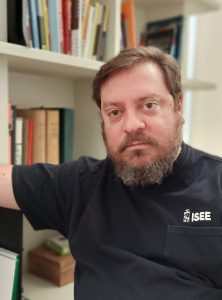The study included the participation of researchers from Chile, Japan and Canada, with experience in the environment and mining, published in the journals Resources, Conservation & Recycling and Science Daily. Jacopo Seccatore, an academic from the Faculty of Engineering and Sciences of the Adolfo Ibáñez University, supported his mining approach through the development of a mathematical model that shows a greater use of mercury than is assumed in artisanal gold mining, especially in Latin America. Central, South America and Africa.
The investigator Jacopo Seccatore, academic of the Faculty of Engineering and Sciences of the Adolfo Ibáñez Universityparticipated in an international study that developed a mathematical model that detected inconsistencies in the actual flow of mercury in artisanal gold mining in the world.
The study included the participation of environmental and mining experts from Chile, Japan and Canada, and was published in international journals Resources, Conservation & Recycling and in ScienceDaily.
A total of 137 countries signed the Minimata Agreement (year 2017) that seeks to limit the trade of mercury, a highly polluting compound. Although most of the countries involved in artisanal and small-scale gold mining have regulated this aspect, the countries subscribed to the agreement continue with high rates of mercury use. Precisely for this reason, the researchers developed this model to specify and contrast the reported figures versus the real ones.
The agreement requires that the signatory countries stop the national production of mercury by the year 2032. This study was carried out in 39 countries.
“There are inconsistencies in the mercury trade data. Mercury is used to amalgamate gold, being a common practice in informal markets in Central America, South America, Africa and some Asian countries. In an informal mercury market, the actual numbers depend on informal and illegal sources of flow, not officially considered. It is a great contribution to create this model to help quantify the true flow of mercury associated with artisanal mining in the world”, said Seccatore.
The study was led by Dr. Yingchao Cheng of the National Institute for Environmental Studies in Japan, with support from Dr. Kenichi Nakajima and Dr. Keisuke Nansai of the same institute; Professor Jacopo Seccatore from Universidad Adolfo Ibáñez in Chile, Professor Marcello Veiga from the University of British Columbia in Canada, internationally recognized as the world’s foremost expert on mercury in artisanal mining, and Professor Masaki Takaoka from Kyoto University in Japan.













![[Img #74683]](https://thelatestnews.world/wp-content/uploads/2024/12/The-main-mistakes-to-avoid-when-betting-on-electronic-sports-300x200.jpg)
Add Comment